I don’t know if I’ve mentioned it, but I eat a lot of food at work. I might eat more often than I teach to be completely honest. And to be completely honest, I don’t really mind...ok, not minding is kind of an under-exaggeration…I totally love it. The Food Network is my favorite television channel after all, and because I don’t have a T.V. here, I have to settle for the real thing. I’m actually learning a lot about Asian/Singaporean culture through these little food extravaganzas. My colleagues not only fill me in on exactly what it is that I’m eating (this is not always clear at first glace), but also offer the entire history of the food including but not limited to its country of origin, the festivals with which it is associated, and, from the Chinese teachers, whether it is a hot or cool food and the Chinese traditional medical practices in which it is used. On today’s menu: pomelo, Chinese tea, durian flavored ice cream moon cakes, curry, and Kueh Pie Tee…a mini fusion of food in our own staff room.
For those of you who are interested, a brief overview of these foods follows. For those who are uninterested, I don’t know what is wrong with you for not loving food with the sort of wild passion that ignites when you’re first falling in love (not really an over-exaggeration for me), but feel free to let your eyes glaze over for approximately the next four paragraphs.
First on the list: pomelo. Pomelo is a fruit of the citrus family, and reminds me quite a bit of a grapefruit in the taste category. Although, in the looks category, it is basically giant, we’re talking like 12 inches across, round, and hard with a greenish-yellow rind and a light pinkish fruit center. So, while I tasted something like grapefruit, as I stared wearily at the giant green basketball, I was second guessing my conclusion as to its relation. This conclusion, however, proved quite accurate when the Chinese teacher sitting next to me, after quietly providing instructions on how to peal the tough skin off the fruit so I wouldn’t lose face in front of all these experienced pomelo eaters, informed me that the pomelo is, in fact, the cousin of the grapefruit. The pomelo is in season from right now until Chinese New Year and is thus associated with the Chinese moon cake festival. My Chinese pomelo informant, also told me that the rinds of the fruit can be cooked down, and the juices are used by women to make their hair shinny. The juices are also used to do something after birth that I didn’t quite understand and probably don’t want to. In addition, I was informed not to eat too many pomelos because they are a heaty food, and may give me a cough. I stuck to two pieces. I think that should be safe.
I cannot provide any interesting information about the Chinese tea as I’ve not tried it, but rather I took a packet to make at home later this weekend. I do not have a clue what kind of tea it is, because all the writing is in Chinese. I decided to risk it, and take one without asking for a translation. How to judge which packet to take?...the prettiest wrapper of course.
I can, however, address the durian-flavored ice cream moon cake. Moon cakes are basically a pastry with a thick, creamy, jelly, and rich center, and, well, we all know what ice cream is. So far…a winning combination. My only hesitation came from the flavor choice. Durian. Durian is that random, tooth-pasty and stringy textured fruit that native Singaporeans seem to love despite the strong smell of gasoline it emits as vendors, on every street corner of the city, literally yell at you to buy some. I haven’t worked up the courage to try the “fruit” yet, but I have to admit, the durian-flavored ice cream moon cake wasn’t so bad. It was actually quite good. I wonder if the pastry and delicious ice cream were masking the durian’s true colors?
Curry has become a pretty common staple in my diet here. Its most general definition is that it is a mixture of spices and is most often associated with Indian cuisine. In the West, we are generally familiar with Tamil curries from India, which is typically the curry you get when you buy pre-made curry mixtures in the grocery store or eat at an Indian restaurant in the states. Really, curry can be and is anything; the word just refers to how a dish is prepared. There are coconut and wheat curries and rice, vegetable, and meat curries. Thai food offers red, yellow and green curries, not to mention all the sweet butter and cream based curries. I think of curry as salsa’s distant cousin. Salsa comes in sweet, savory, bitter and salty and it is good on almost anything, just like curry. Today the curry in the teachers’ room was of the spicy variety (big surprise), and I ate it on some bread. Like I said, anything goes.
Finally, and I saved the best for last, Kueh Pie Tee. My colleagues told me that dish is traditional of Singapore, which is a rare and special quality to find in a food, because so many of the dishes here originated in India, Malaysia, China or the like. I would describe Kueh Pie Tee as a flat bottomed, savory ice cream cone that you stuff with some warm sliced vegetables, crushed peanuts, chili, and scrambled egg, then drizzle with random black sauce and top with a sprig of Chinese parsley. Probably not the most technical definition of the dish but pretty accurate all the same. I like to think that one day, a little old Singaporean lady found she had may left overs from the family’s holiday feast, and needed to feed her family one more time before they all returned home after the holiday weekend. So, she stuffed all the left over food into some ice cream cones and feed her family one of the most delicious meals they had ever eaten. From then on, the family always enjoyed this dish the day after the big holiday feast. Ok, so maybe not the most accurate story (in fact, I created in my imagination to try to explain how all these ingredients ended up together), but technical all the same. Regardless of how Kueh Pie Tee came about, it is really quite delicious. Now, I must go back for more moon cake ice cream (I’ll stick with hazelnut- flavored this time) before invigilating an exam.
And with the weekend came yet another wonderful food experience. After my Saturday morning dance class, I joined some of my colleagues for a Hari Raya/birthday party celebration. A fellow English teacher hosted her joint Hari Raya (a Muslim holiday) and birthday party at a chalet on the east coast of the island. (As a side note, it is common for Singaporean families to rent chalets for the weekend to barbeque, swim, play, and generally escape from the city life…a sort of upgraded version of camping I suppose.) The theme of the party?…purple. So dressed in the only purple shirt, in fact the only purple anything, I own, I joined my new friends for a homemade Malay feast all served on purple plastic plates with napkins and décor to match. The list that follows includes the technical terms for the foods we ate of course: We had rice “cakes” with a vegetable coconut curry, noodle soup with crunchy things, bean curd, soy beans and vegetables in a spicy sauce, potato cakes, and a random black vegetable concoction that no one really knew how to translate from Malay into English for me. There was lamb and chicken for which the birthday girl’s (Siti’s) mother had ground each individual spice by hand. There were also plenty of toppings, sauces and curries to try. This, all before desert!
And, oh the dessert!...eight different varieties of homemade miniature cookies, which took Siti’s sister almost 24 hours to make by hand. There were shortbread-like cookies stuffed with ground peanuts, chocolate cookies rolled in peanut butter, butter cookies with lemon jelly sandwiched in between, toffee cookies, and crumble cookies with a layer of chocolate so thin and even it looked as if a machine, not a human hand, had carefully smoothed the chocolate over the crust. There were chocolatey rice crispy-like balls and even Malay sugar cookies so sweet they melted the second they touched your tongue. And then…Siti brought out her cake! A white cake layered with fruit and smothered with whipped cream. We ate, and talked, and ate and ate and sang “Happy Birthday” and thanked Siti’s family profusely, and took pictures, and laughed and complained about how much we had eaten, and stretched out the waist bands of our pants and ate some more. Funny, how similar to our American holiday celebrations!
It was truly one of the best experiences of my Singapore journey thus far, and I will always cherish my first Hari Raya slash birthday celebration with all my heart. I’m so grateful to have had such a wonderful afternoon with my colleagues/new friends. But after the meal was no time to contemplate these facts, for I needed to unbutton my pants and lay on the couch for the rest of the evening in a state of excessively happy food lethargy. The only thing missing at this point?...the American football game!
Now that I’ve gotten all this excitement about food out of my system, though maybe not the food itself, let’s back track to Friday. After invigilating exams, I was off on my teachers-only field trip to Singapore’s landfill, Pulau Semakau. We took a 20 minute ferry ride from Singapore’s southwest coast to the man-made “dump” island. The Semakau Landfill is actually two natural islands joined by man-made cells of trash ash. The cells are lined with an impermeable material to prevent the incinerated trash from leaking into the ocean when it is poured in. Singapore produces almost seven thousand tons of garbage a day, but by incinerating the garbage, they are able to reduce this number by nearly 90% to just over one thousand tons. This incinerated garbage is transported in a three-hour long barge ride from mainland Singapore to Semakau every night. Large trucks then dump the ash into the cells on the island. Unused cells are filled with ocean water until they are needed, at which time the water is drained from the cell.
The beauty of this “dump” island is really quite amazing. The cells that have been filled look like prairies with wild green grass running like barefooted children across their surfaces. Those cells which remain unfilled are actually mini-ocean habitats for now. Much of Semakau’s native mangroves remain in-tact, and those that were destroyed during building have been replaced. There is a very diverse inter-tidal ecosystem on the island made up many varieties of fish, starfish, seahorses, and endangered birds to name a few. There are, of course, the unsightly buildings and machinery necessary for the work, but overall, it is by far the prettiest landfill I’ve ever seen. Our tour guide told us they even occasionally see dolphins jumping off the coast.
Because Commonwealth Secondary is a “green” school, we are bringing the students to Semakau on a post-exam field-trip in late October. We hope they will learn not only about Singapore’s waste management and landfill processes, but also that the experience will inspire them to reduce the amount of trash they produce daily. At the current rate, Semakau will be completely filled by 2045. Creating another space will cost over 600 million dollars. But the National Environmental Agency hopes Singaporeans will follow their “reduce, reuse, recycle” motto to extend the life of the landfill, and Commonwealth knows the younger generation can play a major part in achieving this goal.
Upon returning from Semakau, I joined Stephanie, Jacob, Hannah, Dr. Dan, PiA Jacob, and Hannah and Jacob’s friends Allison and Grace at Wine Connection for a lovely glass of Riesling and even better conversation, much of which related to Semakau because Dr. Dan and Jacob are the environmental scientists type. My evening ended early as I needed to prep, more than I knew, for Saturday’s eating extravaganza.
Sunday morning was spent at the gym for obvious reasons. Stephanie and I went to La Pau Sat for lunch, where I enjoyed popiah (a new favorite and something that isn’t smothered in sauce which is nice for a change). Popiah is very similar to Kueh Pie Tee (see paragraph six) in that it is stuffed with the same ingredients except, instead of being served in savory ice cream cones, it is served in a very thin tortilla-type wrap. Think -- Asian burrito. We then spent a leisurely afternoon wandering through the galleries at the Singapore Art Museum and, don’t think less of me for this, we sipped foamy hazelnut lattes at Starbucks afterward. I know, how American of me! But it is the first time I’ve been there I swear, and despite the temptation of seaweed shaker fries, I haven’t even set foot in a McDonalds yet.
For dinner, we went to Din Tie Fung, a chain restaurant famous for their dumplings, where Stephanie had pork and shrimp dumplings and I enjoyed vegetable, bamboo shot and shrimp soup. We shared some incredibly sticky, smooth mini red bean dumplings for desert. If you don’t think about the filling, they are really exceptionally amazing. And, if you’re coming to visit, make a note and remind me to take you there for some!
After dinner, we met Stephanie’s Australian friend Emma and Emma’s friends for a drink at a 24-hour hawker center. Emma is currently working for a non-profit organization in Cambodia and was visiting Singapore for a fundraising event this weekend. And, once again, I found myself in a ridiculously funny and refreshingly cosmopolitan experience that so fully encompasses the oddity and fascinating qualities that make this city unique: sharing a “world acclaimed” Tiger beer (which is funny because it tastes strangely like Bud Light to me) at a Singaporean hawker center, with an Australian, a Scotsman, an English couple and a California girl, all the while being made fun of by the English couple for how American I looked carrying around my Starbucks bag with my newly purchased coffee mug tucked snuggly inside, and occasionally being serenaded with a sloppy rendition of “We Will, We Will Rock You” by a drunk Indian man wandering around the food court. This is my life.
TIA, Cheers on this lovely Monday morning and to a great week ahead,
Rachel
Sunday, October 4, 2009
Subscribe to:
Post Comments (Atom)



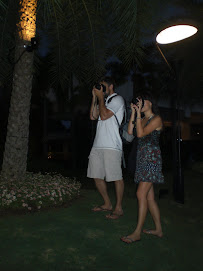

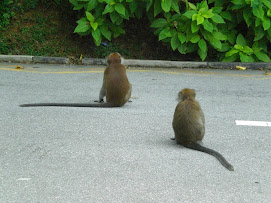




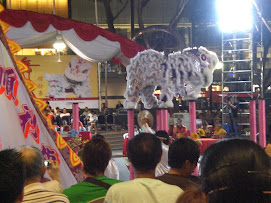


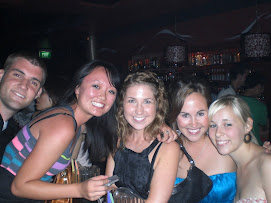

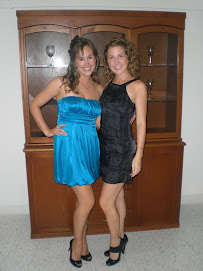


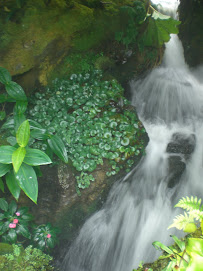

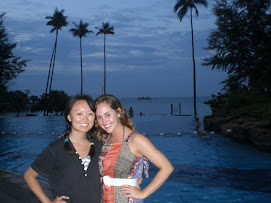
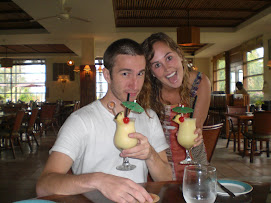
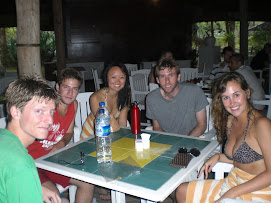
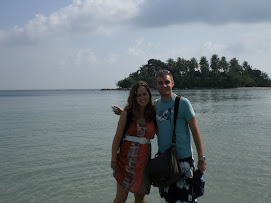
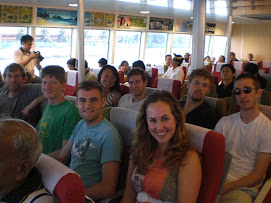

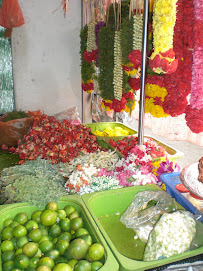


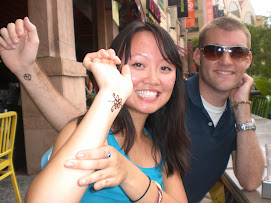

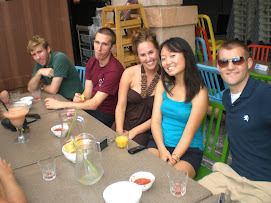
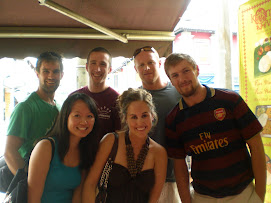


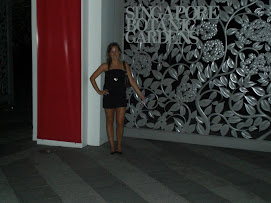
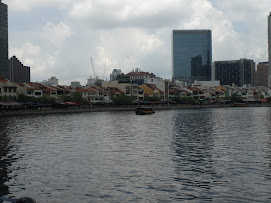



No comments:
Post a Comment